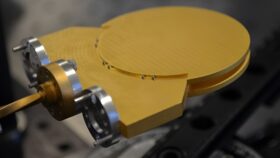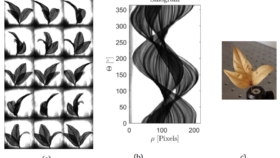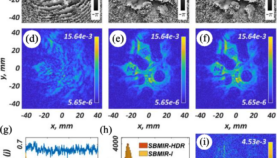
Feasibility of Using a 300 GHz Radar to Detect Fractures and Lithological Changes in Rocks
This article examines the possibility of using a high frequency radar (300 GHz) to detect fractures and lithological changes in rocks. This study, carried out in collaboration between Federico Sanjuan (University of Pau, France) and the IMS laboratory (University of Bordeaux), is in the context of the improvement of the methods of detection and quantification of fractures in rocks, which is of particular importance in various fields such as building materials, geotechnics, tanks as well as the diagnosis of dielectric composite materials and cultural heritage objects.
Despite the existence of different methods such as seismic, geological radar and X -ray micro -omnage, each technique has compromises in terms of spatial resolution, volume studied and depth of penetration in rocks. The high frequency radars available on the market, although compact and capable of imagining large areas in a short time, have not yet been sufficiently explored to assess their usefulness in the detection of fractures and lithological changes.
In this study, we have carried out various experiments on construction and tank rocks using a continuous continuing wave radar operating at 300 GHz to assess its viability in this type of application. The results have shown that the radar could quantify fractures of the millimeter to a depth of penetration into the rock of 1 cm with a sensitivity of 500 µm. In addition, it was possible to identify lithological changes, including during the detection of interfaces generated by the artificial union of two samples from the same rock.

(a) The radar architecture; (b) the chirp signal.
The document highlights the importance of these discoveries for scientific and industrial applications, highlighting the potential of the FMCW radar at 300 GHz as a non -destructive tool for the study of rocky materials and the detection of their alterations. Keywords include continuous wave radar modulated in frequency (FMCW), radar imaging, millimeter waves and non-destructive tests.

The main results are presented for various rock configurations, illustrated in associated figures. The experiments were carried out on three types of rocks:
Limestone (Limetone): This rock has specific fracture detection results in radar images obtained in the axial direction.
Granite (granite): similar results are reported for granite, with radar images showing the detection of fractures.
Dolomite (dolomite): This rock also shows fracture detection results in axial radar images.
The results show that the 300 GHz radar was able to identify the two faces of the rocks that simulated the fractures. This was achieved despite the variations in amplitude caused by electromagnetic waves moving at different speeds through the rocks, which were heterogeneous and could contain fossils, intraclasts and ferromagnesian minerals.

a) A photograph and drawings from the experiment presented in Figure 4d; (b) the radar image results; (c) the upper view of the 3D image reconstruction.
Download paper pdf on ResearchGate
Sanjuan, F., Fauquet, F., Fasentieux, B., Mounaix, P., & Guillet, J. P. (2023). Feasibility of Using a 300 GHz Radar to Detect Fractures and Lithological Changes in Rocks. Remote Sensing, 15(10), 2605.


